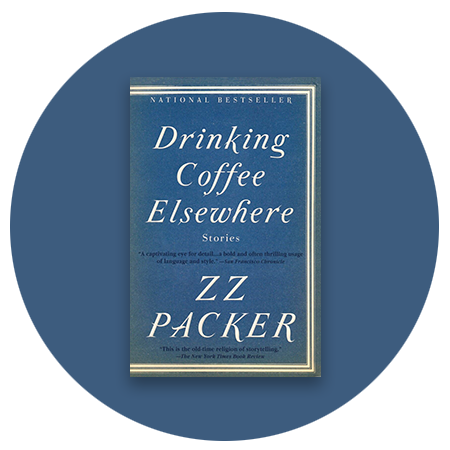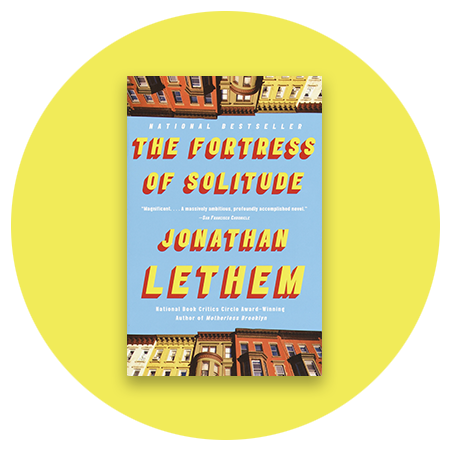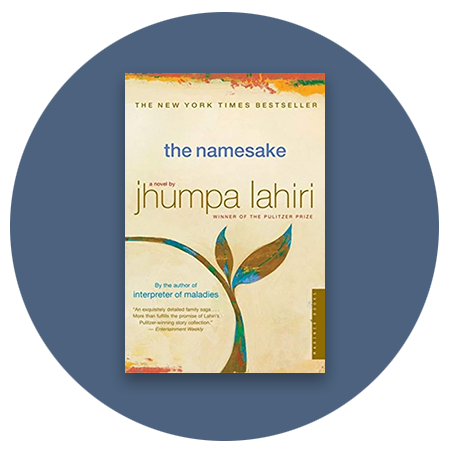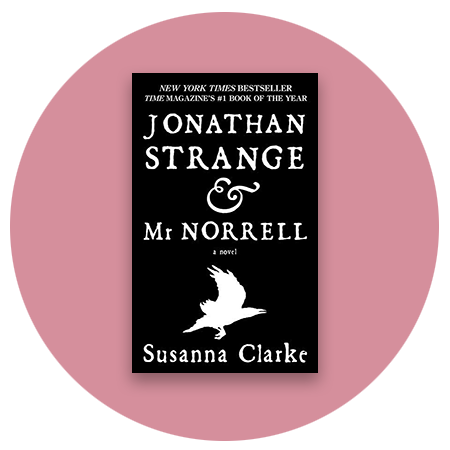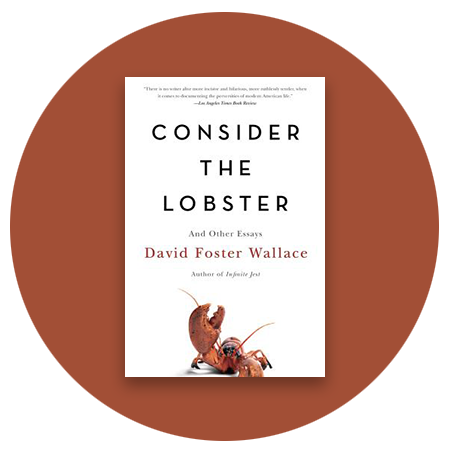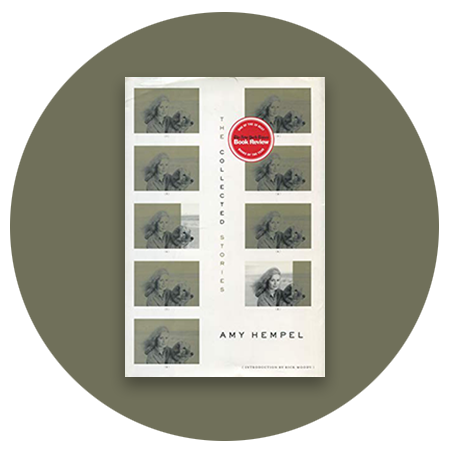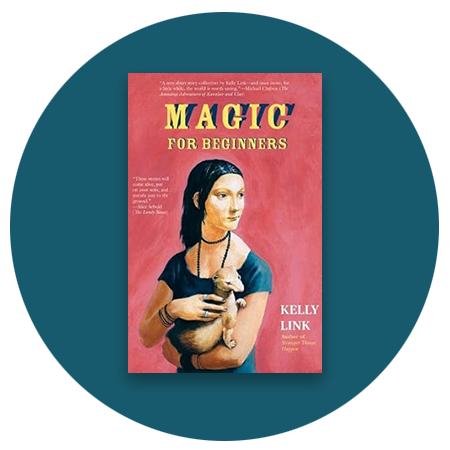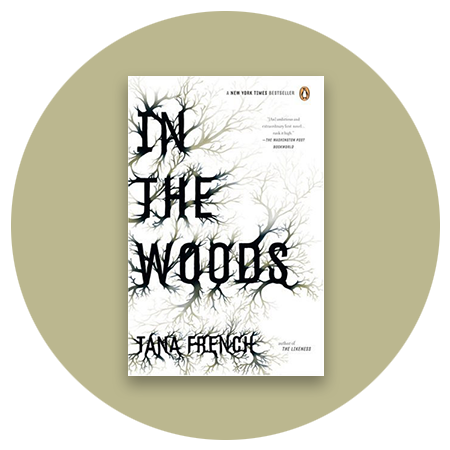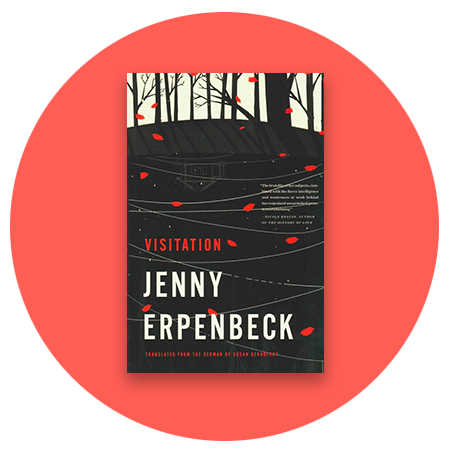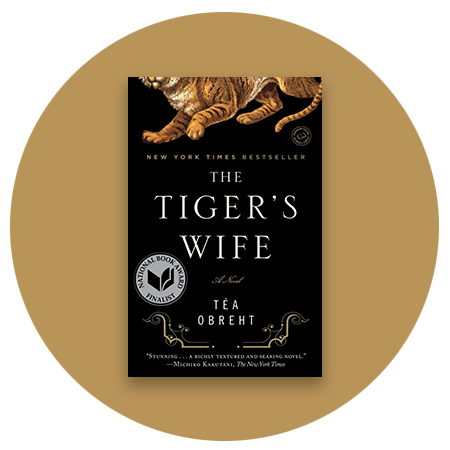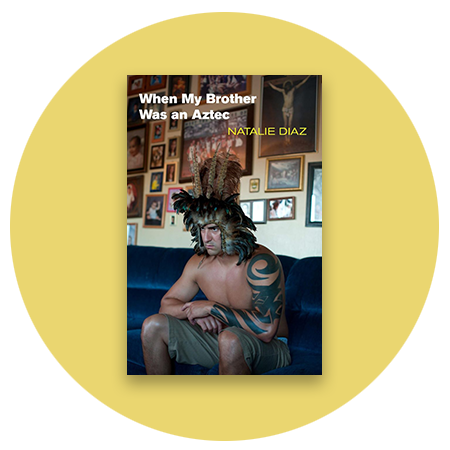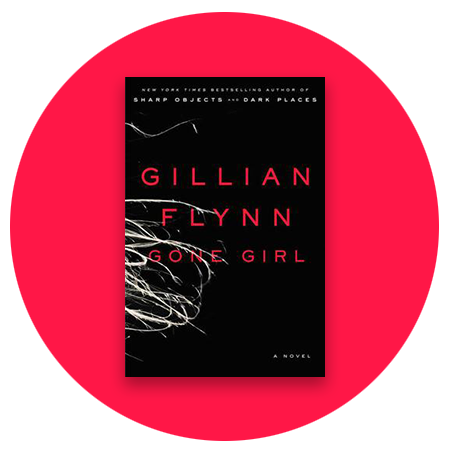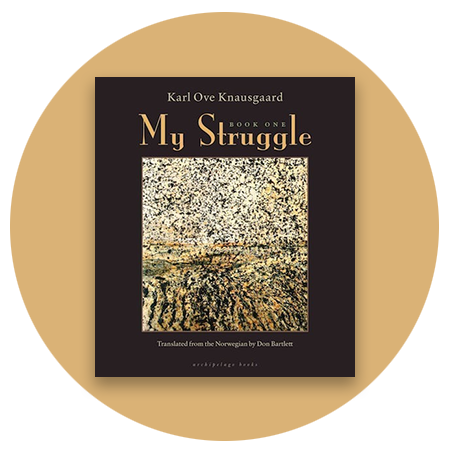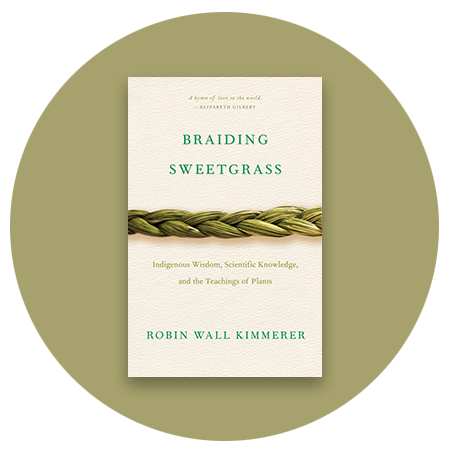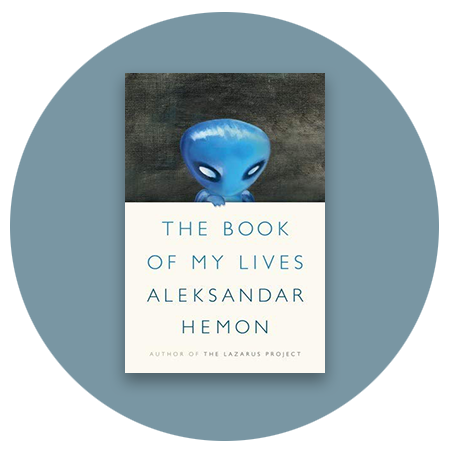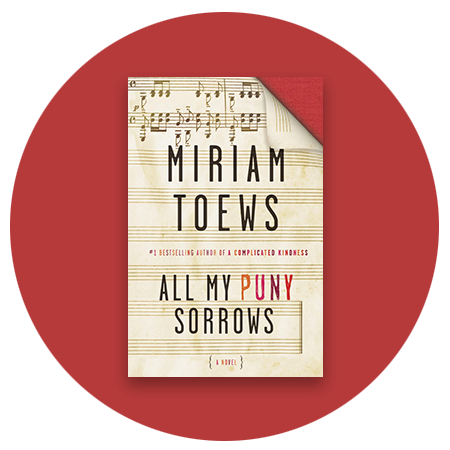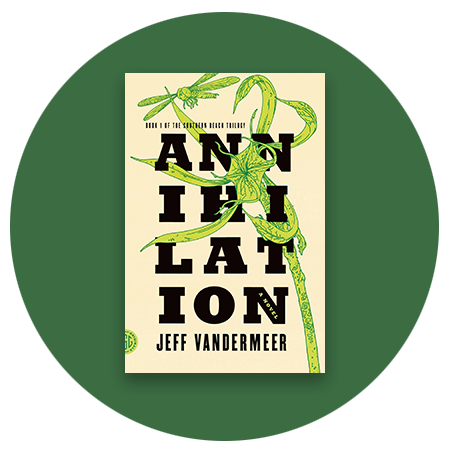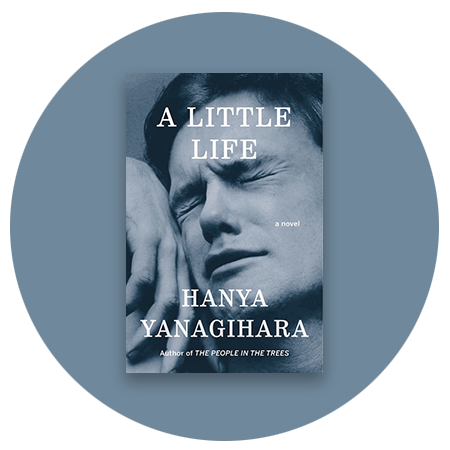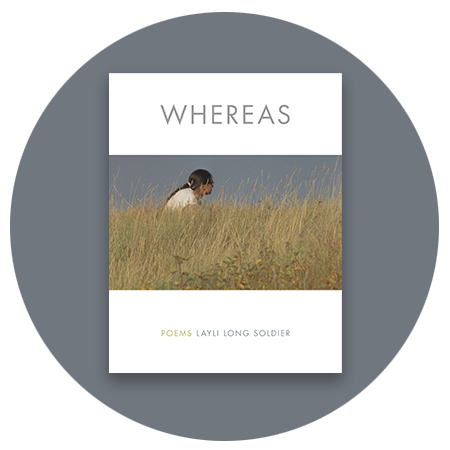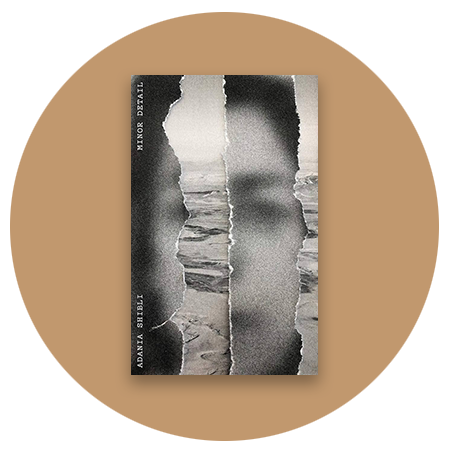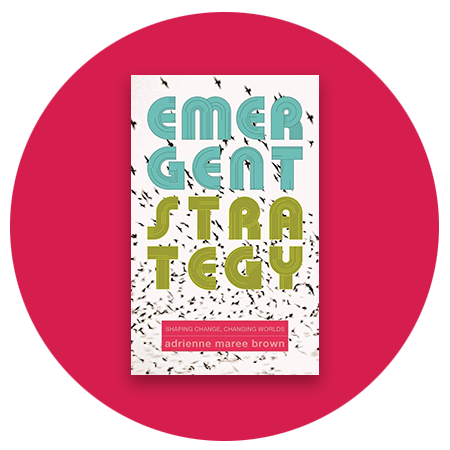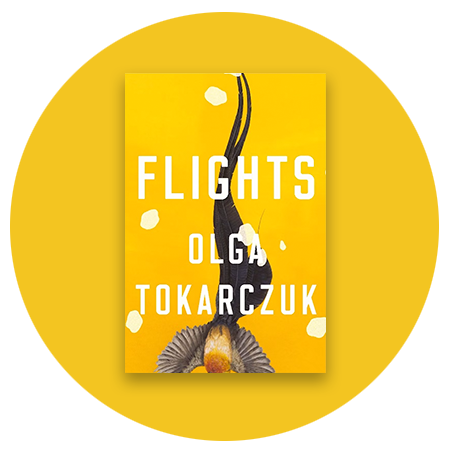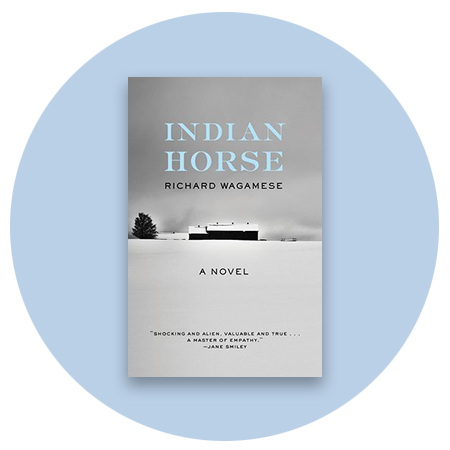Last week, The New York Times Book Review published a list of the “100 Best Books of the 21st Century.” (Well, so far, obviously. Why not just call it the best books of the last 25 years? Do they know something we don’t? Oh well.) To put it together, the Book Review surveyed “hundreds of novelists, nonfiction writers, academics, book editors, journalists, critics, publishers, poets, translators, booksellers, librarians and other literary luminaries,” asking them to pick ten favorite books published in the US since 2000. Then, “respondents were given the option to answer a series of prompts where they chose their preferred book between two randomly selected titles.” (Unclear what, exactly, this means, but it’s giving Hot or Not.)
Article continues below
Anyway, the result is a big list that includes a lot of great books, and also, necessarily, leaves a large number out. (Every book of poetry published in the last 25 years other than Citizen, for instance.) Since no one asked us (rude), despite the Lit Hub staff being entirely made up of novelists, nonfiction writers, academics, book editors, journalists, critics, publishers, poets, translators, booksellers, and other literary luminaries (no librarians, alas), we decided to make our own list of books the Times list missed. (Some of these omissions could be considered shocking, but that’s what happens when you trust such a thing to the power of consensus.) No doubt many wonderful books have been left off both lists, however, such is the nature, etc. etc., so please do feel welcome to add your own favorites in the comments. In the meantime:
Emma Donoghue, Slammerkin (2000)
It is no exaggeration to say this book is seared more vividly into my imagination than any actual experiences (those who read are not always those who do). Donoghue’s frank, bawdy, and brutal tale of prostitution in 18th century England begins with the calendar riots as London’s denizens react to calendar reform with righteous fury. Her father dead in the riots, and her mother pushing her to become a seamstress, a teenaged girl instead trades her virginity for a hair ribbon and soon becomes one of the most celebrated courtesans of Covington Garden, at a time when London’s population was heavily employed in sex work. Emma Donoghue understands how to capture both the humorous and grotesque, for a book which wouldn’t have seemed out of place next to the original eviscerators of the 18th century. I guess what I’m saying is, Jonathan Swift would have totally loved this book. –Molly Odintz, CrimeReads Managing Editor
Chiang’s monumental second collection of stories, Exhalation (2019), is every bit as impressive as his first, and could easily be the Chosen Chiang on this list, but for its seismic impact on the landscape of contemporary science fiction (as well as the awesome profundity of its contents), I’m going to give the edge to Stories of Your Life. “Hell is the Absence of God” (set in a world where the existence of Heaven, Hell, and God have been proven, and where miracles and angelic visitations are commonplace, if not always pleasant) and “Story of Your Life” (a time-warping tale about a linguist attempting to decipher the language of some newly arrived aliens) are the collection’s showpieces, and deservedly so, but each of the eight high-concept, philosophical thought experiments that make up Stories of Your Life is a gorgeous, humane, and mind-expanding work of art. –Dan Sheehan, Book Marks Editor in Chief
John McGahern, By the Lake (originally published as That They May Face the Rising Sun) (2002)
Not to generalize—or make wild, baseless assumptions about any of you—but if you’re scanning this list on the American internet here in the annus horribilis of 2024, there’s a solid chance John McGahern is the greatest Irish writer you’ve never read (though contemporary Hiberno-Titans like Colm Tóibín and Claire Keegan would not exist as we know them without his influence). If that is indeed the case, I would urge you to change your errant ways. His fictions—stark, existential examinations of the repressed mindscape of mid-century rural Ireland—are extraordinary. McGahern’s elegiac final novel is something of a tonal departure from the five that preceded it, but it may well be his masterpiece. A delicate, largely plotless sketch of a lakeside community in County Leitrim in the early 1990s—when Ireland was emerging from its long, theocratic night—That They May Face the Rising Sun is the story of a couple who leave their professional lives in London behind to return to Ireland to live and work on a small farm. There, through intimate (but never sentimental, never pat) exchanges between neighbors, and exquisite observations about the natural world, McGahern conjures the dawn. –DS
I met this collection on a fiction class syllabus, where it was placed among rightful peers like Edward P. Jones and George Saunders. (Brief digression: Look, I love George, but did he really need three sets of laurels on The List? But there I go, giving in to the the scarcity model. Playing right into the overlords’ hands…) Chronicling young Black women and girls as they step in and out of self-awareness, these stories formed a much-needed well of psychological recognition for This Reader. But they linger as much for their style as their content. Packer’s voice is blazingly confident. Brazen, electric, alive, inimitable.
It’s a book with no skips. But “Brownies,” haunts as a master class in compression and unsettled interiority. This story finds a troop of Girl Scouts discovering social difference on an ill-fated camping trip. –Brittany Allen, Staff Writer
There have been many books that attempt to tackle Brooklyn, but Jonathan Lethem’s bildungsroman of race, music, gentrification, superheroes, and friendship might be my favorite. Brooklyn was already a stomping ground for Lethem’s fiction, but here, he delivers a personal look at a place and a time refracted through the lens of comic books and bass drum. You’ll believe a boy could fly. (Also: the 2014 musical adaptation is sorely under-appreciated.) –Drew Broussard, Podcasts Editor
Lahiri’s debut novel is a quiet but towering epic. In closely observed, un-flashy prose we trace two generations of the Ganguli family through their early days of alienation and yearning in an adopted home. There are love stories in consecution: lovers fall, then parents and children, then lovers again. This book is sometimes held up as a paragon of the “immigrant narrative “(whatever that even means) and has inspired antecedents. That’s all well and good, but I worry genre-fication has siloed Lahiri’s narrative feat. (How else to explain the novel’s absence from The List?!) This novel is the best of the 21st century: elegantly structured, poignant, wise, lush, and breathtakingly compact. –BA
I should not have been surprised that the NYT list skewed heavily away from genre fiction—but missing Susanna Clarke’s world-changing doorstopper of a debut is a particular head-scratcher. On paper, the book still seems daunting in an almost comical way: a Regency-era epic (with footnotes and extensive digressions on philosophy, magic, politics) about the discovery of two ‘practical’ English magicians during the Napoleonic Wars, whose abilities challenge each other and the global balance of power while tapping into some still-unsettled cultural notions of English mythology and myth-making. It’s the rare fantasy novel that seemed to break into popular consciousness after its release, and that despite its heft! Many people have leapt into the historical fantasy space since Clarke, but no one has ever written anything quite like this—I’m not sure anyone ever will. –DB
Tom McCarthy, Remainder (2005)
The more time I spend alive on this planet, the more sense Tom McCarthy’s first novel makes. In it, an unnamed London man struggles to re-enter the world after a horrific accident, his memories scrambled, his trust in the fabric of reality thin at best. On the other hand, he’s been awarded some £8.5 million in a settlement, and he proceeds to use that money to seek an elusive sense of authenticity—by (paradoxically) hiring a rapidly expanding team of actors and extras to re-enact scenes and sequences from some of the memories—minor but “fluent and unforced” he does retain. The result is a funny and deranged philosophical novel that I still think about some 20 years on. –Emily Temple, Managing Editor
There’s been a lot of DFW ~discourse~ since the author’s death. As these things go, some of it has been very worthwhile. But some of it is dumb. Namely, the memeification of the author’s entire canon as not so much a set as books as signifying red flags to beware of, when swiping to glory on the apps.
It’s true that obnoxious hipsters like DFW. It is also true that he was a brilliant writer. Consider the Lobster, which blew my entire mind when I found it at 22, is a stylish symphony. Wallace applies his dazzling brain to philosophical questions about modern life. (Should we eat animals? Should our dictionaries prescribe or describe language?) That intellectual wrestling is sincere and rigorous. The language dazzles, even as it invites your conspiracy.
In concert with the nonfiction of Zadie Smith and Joan Didion, DFW taught me what an essay could do. I think this book is one of his best. –BA
Curtis Sittenfeld, Prep (2005)
I can’t think of a novel that more poignantly—and accurately—captures deep alienation and cringiness of adolescence. Lee Fiora, an unhappy scholarship student at an august prep school whose desire to fit in is bone-deep, is an all-time great protagonist. She is her own worst enemy, and you want so much for her to do right by herself that her moments of grace and joy are all the more triumphant. –Jessie Gaynor, Senior Editor
Haruki Murakami, tr. Philip Gabriel, Kafka on the Shore (2005)
Murakami is a heavy-hitter with surprisingly wide appeal, considering the oddness of his work. Everyone has their own personal ranking system for Murakami’s works, but for me, this is one of the best, second only to A Wind-Up Bird Chronicle. (Norwegian Wood is patently bad, in case you were wondering.)
“When the English translation of Haruki Murakami’s bestselling A Wind-Up Bird Chronicle transformed one of Japan’s best-kept literary secrets into the world’s best-known living Japanese novelist, this reviewer’s acquaintances neatly subdivided themselves into three groups: besotted devotees (one British friend went so far as to name his newborn son “Haruki”); critical admirers; and people who came out in a nasty rash,” David Mitchell wrote in The Guardian. He too correctly prefers A Wind-Up Bird Chronicle, but revels in Murakami’s seductive prose and “trademark kookinesses” here, and notes that “Murakami’s protagonists radiate a likeable humanity at odds with many of the “Asia Extreme” Japanese writers currently being translated into English, including Ryu (no relative) Murakami, Natsuo Kirino and Ring-master Koji Suzuki. Murakami writes Cert 18 scenes with aplomb when his plot demands it, but these never feel gratuitous or onanistic.” (One of our 10 Books that Defined the 2000s) –ET
If we are recognizing masters of the short short, I believe it’s a sin to omit Amy Hempel. Her voice-driven reflections capture split-seconds (“Memoir”) as breezily as they do eras (“In The Cemetery Where Al Jolson is Buried”), and always in glittery, sage containers. We may not be giving her enough credit for making the mordant aphorism a feature of contemporary fiction.
This book is really an anthology of four collections, so I realize I could be cheating with this petition. We could submit The Dog of the Marriage (2005) and leave it at that. But why deprive a wider readership of these uncanny, hilarious vessels? –BA
Help, I’ve fallen down the short story well and now have a trillion collections to sell you!
This one is from Deborah Eisenberg, who was introduced to me as a “writer’s writer”—which as we know is often code for tricky, stylish, or deep. These stories are all those things. They’re also witty, surprising, slightly askew studies of people metabolizing profound disruption. In Twilight, unsettled characters pilot six perfect stories around a post-9/11 American metropole. (My favorite fellow? The acerbic crank in “Some Other, Better Otto.”)
I’d advocate for this collection’s inclusion on the strength of its formal perfection alone. But it doesn’t hurt that the book is a keen observer of its moment. These stories capture an angsty paranoia that already feels specific to the middle-aughts. –BA
Link is contemporary literature’s master magician—not because there’s sometimes magic in her stories (though, duh), but because of how deftly she shifts between genres and styles, blending horror, fantasy, and literary fiction with a winking-but-largehearted sensibility all her own. Some writers are genre-defining, but Link is un-genre-defining—you want to give her books to any aspiring writers you meet, as proof that you can do anything, if you can make it work. Any of her books could really do here, and I’m sure some will have other favorites, but Magic for Beginners was her breakthrough collection, and contains possibly my favorite short story of hers, “Stone Animals,” in which several things are haunted, not least of all our ideas about ourselves. –ET
Roberto Saviano, tr. Virginia Jewiss, Gomorrah (2006)
Combining journalism, memoir, and literature, Saviano’s book is an intimate portrait of Naples, a city held in the thrall of corruption, violence, and illicit power. Saviano’s writing reveals and illuminates like a novel, taking us to the hidden workshops where couture destined for Hollywood award shows is sewn in appalling conditions, to the quarries that once supplied marble to Renaissance masters and are now filled with toxic waste, and to the homes of the crimes bosses built to mimic the opulence they’ve seen on film. Saviano was born in Naples, and his relationship with the city makes every story and revelation feel personal, sometimes like a betrayal. Gomorrah’s moments of near-fictional description are beautiful, but never distract from the depth of his research. His investigations brought him arguably too close to his subjects, and the book earned him multiple death threats from the Camorra, the powerful Neapolitan crime syndicate and business empire—in response, the Italian government gave the author a permanent police escort. –James Folta, Staff Writer
Every Tana French fan has a personal favorite from her Dublin Murder Squad series—my own is probably The Likeness, a masterful Gothic crime thriller as indebted to The Secret History and Rebecca as it is to police procedurals—but for sheer impact, In the Woods can’t be beat. On the surface, it looks like nothing so much as a great detective novel—but French upends convention by never quite delivering the resolution that the reader is looking for. The fact that she then spent five more books jumping around different characters on the Murder Squad instead of picking up Rob Ryan’s story just cemented her reputation as a writer willing to take big genre risks while still delivering big genre satisfactions. –DB
Millhauser is a writer’s writer of the highest order—also, he has a Pulitzer, but whatever. We could argue all day about which collection is best, and each one has individual stories to write home about; this is the one whose tales of obsession, surrealist suburbia, and “impossible architectures” stick most clearly in my head. Deadpan, sly, mesmerizing, and assured, each one is a knockout. –ET
Rick Perlstein, Nixonland (2008)
Rick Perlstein is quite possibly the smartest person I’ve ever read. If you want an understanding of American conservatism, politics, and how we got here, his work over the last 20 years is essential reading. Out of his quartet of books on American conservatism since the 1960s, Nixonland is my favorite. Starting in the tumult of the 1960s, Perlstein traces Nixon’s resurgence and rise to the presidency in the aftermath of LBJ’s shellacking of Barry Goldwater. Perlstein has a novelist’s eye for detail, and writes with a captivating, sentence-level crackle that few political historians are capable of. His view of America moves between the halls of power to the street, making his case for America’s crack-up with not just candidates and campaigns, but protests and pop culture too. Most importantly, Perlstein has a crystal clear sense of the stakes and of right and wrong. This is not a historian interested in politics as a parlor game, or as a realm that floats about the material conditions of our lives. Perlstein takes his work and his thinking seriously, and his ability to illuminate what is rotten in our politics is harrowing and enthralling. –JF
Maggie Nelson, Bluets (2009)
Nelson did make it onto the NYT list for The Argonauts—and rightly so, that book is one of the best of the century so far—but she’s also one of the few writers I can reasonably argue ought to have been represented more than once, unlike some who shall remain unnamed. The immediately iconic opening line of the collection (“Suppose I were to begin by saying that I had fallen in love with a color…”) sets up a book that is not quite poetry, not quite essay, not quite memoir, and yet all of those and more. It is, a la Derek Jarman’s Chroma, a book about a color but it is also a book about depression, about love, about obsession. It is also continually evolving, different every time I return to it, like something out of a fairy tale. Odds are, several of your favorite writers have this book close to their hearts. –DB
The best speculative work allows us to step far enough away from our own condition to see ourselves with fresh eyes. Miéville’s most well-known book is many, many things: a procedural, a fantasy, an allegory for colonialism, and for Palestine and Israel. The central conceit of two cities uneasily sharing one geographic space under the eye and thumb of a foreign power with an unquestioned right to violence, and the process of “unseeing” after any breaches between the two cities, all make for an uncanny and hallucinatory setting for the novel’s crime plot line. It’s a whodunit and whereisit. –JF
Jenny Erpenbeck, tr. Susan Bernofsky, Visitation (2010)
At the center of this extraordinary novel is a house on a lake, surrounded by woods. The house and the lake and the woods are in Brandenburg, outside of Berlin. People move in, through, and around the house, and time moves in these ways too—the novel is set during the second World War, and before, and after. The realities and their attendant characters—the gardener, the architect, the cloth manufacturer, the red army officer, the girl—are layered elegantly on top of one another, creating a sense of pattern, of fugue, more than of traditional narrative.
As in Woolf’s To the Lighthouse, the house itself becomes the central, if mute, figure of the novel, and time itself its essential subject: what it does to us and to the world, how we remember, and how we don’t. And also like To the Lighthouse, there are little human dramas within this grander and colder scheme, ones that secretly hook us in, however minor they seem, so that we are devastated when time passes, so that we mourn the ones we barely knew, for their fixations, their tragedies, their trying. Elegiac, often astoundingly gorgeous, sometimes strikingly brutal, this is one of the most wonderful novels of any sort that you could hope to read. P.S. this novel edged out Erpenbeck’s more recent novel, Go, Went, Gone, also translated by Susan Bernofsky, for this list, but we also very much recommend that one. Really you can’t go wrong by immersing yourself in the work of these two masterful artists. (One of our Best Translated Novels of the Decade, 2010-2019) –ET
C.D. Wright could be on this list for any number of books she wrote in the last 15 years—which is saying a lot, considering she died far too early, in 2016. Even her posthumous meditation on the beech tree, Casting Deep Shade, could probably survive aggressive cross-genre shoehorning from lyric nonfiction to poetry. So with that sort of inter-disciplinary invention in mind, I offer you Wright’s 2011 National Book Award finalist, One With Others, a book-length poem that could also be described as… lyric documentary?
On its surface, poetry seems the least ready form for rendering things as they happened, as far from the dispassionate camera—its guileless capture of this moment or that—as one might imagine. But in One With Others, based around Margaret Kaelin McHugh, a small-town Arkansas woman (and mentor to the poet), Wright undertakes a kind of journalism of poetics, conveying the full breadth of a historical moment during the tail-end of the Civil Rights era with all the fragmentary detail of an inexhaustible documentarian. Transcribed speech, catalogues of objects, idiosyncratic lists, all of it refracted through the life of a white woman who decided to join a Black march and was ostracized for it. In retrospect, it is easy to question the project of a white poet using a white character to capture a significant moment in Black history, but with that same ease we can say that Wright pulled it off, and for that reason—among countless others—we are forever lucky to have had her as poet and witness both. (One of our Best Poetry Collections of the Decade, 2010-2019) –Jonny Diamond, Editor in Chief
Timothy Snyder’s brilliant Bloodlands has changed World War II scholarship more, perhaps, than any work since Hannah Arendt’s Eichmann in Jerusalem, an apt comparison given that Bloodlands includes within it a response to Arendt’s theory of the banality of evil (Snyder doesn’t buy it, and provides convincing proof that Eichmann was more of a run-of-the-mill hateful Nazi and less a colorless bureaucrat simply doing his job). Snyder reads in 10 languages, which is key to his ability to synthesize international scholarship and present new theories in an accessible way. But before I continue praising this book, I should probably let y’all know what it’s about—Bloodlands is a history of mass killings in the Double-Occupied Zone of Eastern Europe, where the Soviets showed up, killed everyone they wanted to, and then the Nazis showed up and killed everyone else. By focusing on mass killings, rather than genocide, Snyder is able to draw connections between totalitarian regimes and examine the mechanisms by which small nations can suddenly and horrifyingly become much smaller. (One of our Best Works of Nonfiction of the Decade, 2010-2019) –MO
It’s easy to forget, reading The Tiger’s Wife, that Obreht was only 25 when it was published in 2011 (that year, she became the youngest-ever winner of the UK’s Orange Prize—and did you know it was the first book ever sold by her agent, and the second book ever acquired by her editor? Yes, I feel bad too.). I say “easy to forget,” but it might be more accurate to say “hard to believe,” because this debut is so ambitious, so assured, and so richly textured that it feels like something that could only come from decades of toil.
It is an astonishing book for a writer of any age, half fable, half gritty portrait of an unnamed Balkan country recovering from civil war. It is a novel about story, and about family, two things that inform and describe one another. “Everything necessary to understand my grandfather lies between two stories,” our narrator Natalia tells us, “the story of the tiger’s wife, and the story of the deathless man. These stories run like secret rivers through all the other stories of his life.” Part of the magic of Obreht’s writing (it’s also true in her latest two novels, Inland and The Morningside, either of which could be on this list) is how secure you feel in the worlds she creates—the feeling is akin to stepping into a photograph, or a documentary: you look around and clock every detail; you never doubt. You can feel reality hovering underneath the sentences, even when they’re describing something patently impossible. And yet in this novel, she’s always reminding you how these worlds can change, and how we can change them in the telling. (One of our Best Debut Novels of the Decade, 2010-2019) –ET
Mojave American poet and language activist Natalie Diaz (a 2018 MacArthur Genius Grant recipient) is one of those rare and exceptional writers who can seamlessly blend the personal, the political, and the mythic to create shimmering gems that are both joyous and horrifying, tender and brutal, intimate and sweeping. In her debut collection, Diaz, who is an enrolled member of the Gila Indian Tribe, reflects with visceral imagery and sensuous language on her brother’s methadone addiction, her childhood experiences of reservation life, the continued oppression and fetishization of Native Americans in contemporary US society, and the nature of romantic, erotic, and familial love within indigenous communities.
In the title poem, Diaz draws from Christian, Mojave and ancient Greek mythic traditions conjure a version of her brother both awesome and terrifying, a godlike figure who destroys and remakes both himself and his family as his addictions overwhelm him (“My parents gathered what was left of their bodies, trying to stand without legs, / trying to defend his blows with missing arms, searching for their fingers / to pray, to climb out of whatever dark belly my brother, the Aztec, / their son, had fed them to). In “Hand-Me-Down Halloween,” the girl child speaker, already worn down by neighborhood prejudice and the sneers of her mother’s boyfriend, explodes with rage at a white boy who taunts her for wearing his cast-off costume (“He was / the skeleton walking past my house / a glowing skull and ribs / I ran & tackled his / white / bones / in the street / His candy spilled out / like a million pinto beans”). Truly the most brilliant and affecting poetry collection I’ve read in an age. (One of our Best Poetry Collections of the Decade, 2010-2019) –DS
Gillian Flynn, Gone Girl (2012)
The book that launched a thousand comp titles, and not a single one of them has done it better. Flynn’s high-wire-act storytelling was breathtaking when I first read it (the mid-book POV change is still one of the most thrilling moments of my reading life, and why the book remains so frequently aspired-to) and that alone is enough to ensure its immortality, but I find that her precision-rendered main characters have lingered with me for years now. Nick and Amy are unreliable, unlikeable, utterly compelling—and the voice that both of them give to the dark roiling heart of white America in the mid-Obama years now looks something like a warning. –DB
Karl Ove Knausgaard, tr. Don Bartlett, My Struggle: Book 1 (2012)
In retrospect, Karl Ove Knausgaard’s My Struggle saga is perhaps best understood as a literary phenomenon of the internet age. The sense of selfhood that obsesses it is so monomaniacally focused, so deeply confessional, premised on a disclosure so radical (the author’s father’s abuse, alcoholism, death; his wife’s nervous breakdown) it infamously cost Knausgaard some of his closest personal relationships even as it won him international acclaim. Added to that, the suspense and anticipation on which the series’ rising acclaim in the English-speaking world depended was a pleasure its readership had almost forgotten it could feel. Somewhere, out there, were very large books—very large caches if information, of personal data—bound and in physical form but inaccessible to you, the next volume unavailable for another year!
And when the work did become available, there was the sheer superabundance if it, the excruciating detail its author expected you to be interested in—or maybe what he expected you to be was bored. And why would someone want to bore you like that; who was this guy? And what was with the title? What kind of “novel” was My Struggle—or what could it be, a book that so undid the notions of the form (plot, characters, development) as to seem at once to portend the total destruction of the novel and the next stage in its next evolution. In the end, twelve years, five more volumes, and one 400-page not-okay digression on Hitler (Book Six) later, the sum of Knausgard’s achievement feels less than what this first volume promised it could be. But what a promise it was. (One of our Best Translated Novels of the Decade, 2010-2019) –Emily Firetog, Deputy Editor
In Erdrich’s National Book Award-winning novel, the life of Joe Coutts, a young teenage boy living on a reservation in North Dakota is cracked open when his mother is raped. But swift justice is complicated by the specifics—the attacker was white, and the location may not technically have been Native land—which sets Joe off on a mission of vengeance, a mission that will necessarily be destructive in its own right. The ghost of Faulkner speaks loudly through Erdrich, in this novel as in others, but of course not as loudly as her own voice. –ET
Of every essay in my relentlessly earmarked copy of Braiding Sweetgrass, Dr. Robin Wall Kimmerer’s gorgeously rendered argument for why and how we should keep going, there’s one that especially hits home: her account of professor-turned-forester Franz Dolp. When Dolp, several decades ago, revisited the farm that he had once shared with his ex-wife, he found a scene of destruction: The farm’s new owners had razed the land where he had tried to build a life. “I sat among the stumps and the swirling red dust and I cried,” he wrote in his journal.
So many in my generation (and younger) feel this kind of helplessness–and considerable rage–at finding ourselves newly adult in a world where those in power seem determined to abandon or destroy everything that human bodies have always needed to survive: air, water, land. Asking any single book to speak to this helplessness feels unfair, somehow; yet, Braiding Sweetgrass does, by weaving descriptions of indigenous tradition with the environmental sciences in order to show what survival has looked like over the course of many millennia. Kimmerer’s essays describe her personal experience as a Potawotami woman, plant ecologist, and teacher alongside stories of the many ways that humans have lived in relationship to other species.
Whether describing Dolp’s work–he left the stumps for a life of forest restoration on the Oregon coast–or the work of others in maple sugar harvesting, creating black ash baskets, or planting a Three Sisters garden of corn, beans, and squash, she brings hope. “In ripe ears and swelling fruit, they counsel us that all gifts are multiplied in relationship,” she writes of the Three Sisters, which all sustain one another as they grow. “This is how the world keeps going.” (One of our Best Essay Collections of the Decade, 2010-2019) –Corinne Segal, Editor Emeritus
Gabriel Vásquez has long since established himself as one of the leading voices in Latin American fiction, with a career now spanning two decades and including the 2004 breakout Los informantes, but it was the release of El ruido de las cosas al caer in 2011, brought out two years later in the US as The Sound of Things Falling, that cemented his reputation as a giant of international letters. The novel’s aims were at once ambitious in scope and intensely particular, even intimate. Gabriel Vásquez summarized the project in The Guardian after winning the International Impac Dublin award: “We had all grown up used to the public side of the drug wars, to the images and killings … but there wasn’t a place to go to think about the private side … How did it change the way we behaved as fathers and sons and friends and lovers, how did it change our private behavior?”
The narrator and ostensible protagonist of The Sound of Things Falling is Antonio Yammara, a Bogotá law professor whose proclivities make a mess of his current circumstances and drive him to look back on his own and Colombia’s recent past. It’s a life whose texture is often distorted by the effects of narco-trafficking and an increasingly chaotic and violent culture. The story splits out through several time strands, conundrums, and characters, including most notably an ex-con in a pool hall who leads Yammara down a mysterious path and sees both men gunned down on the city streets. The nature of memory, identity, and time become Yamarra’s obsessions, but in classic noir fashion he only seems to wade deeper and deeper into the abyss. Obsession takes over life, as Gabriel Vásquez subtly brings out the devastating effects of a society under the extreme tension of decades of corruption. (One of our Best Translated Novels of the Decade, 2010-2019) –Dwyer Murphy, CrimeReads Editor in Chief
Such is the sentence-level virtuosity of Aleksandar Hemon—the Bosnian-American writer, essayist, and critic—that throughout his career he has frequently been compared to the granddaddy of borrowed language prose stylists: Vladimir Nabokov. While it is, of course, objectively remarkable that anyone could write so beautifully in a language they learned in their twenties, what I admire most about Hemon’s work is the way in which he infuses every essay and story and novel with both a deep humanity and a controlled (but never subdued) fury. He can also be damn funny. Hemon grew up in Sarajevo and left in 1992 to study in Chicago, where he almost immediately found himself stranded, forced to watch from afar as his beloved home city was subjected to a relentless four-year bombardment, the longest siege of a capital in the history of modern warfare.
This extraordinary memoir-in-essays is many things: it’s a love letter to both the family that raised him and the family he built in exile; it’s a rich, joyous, and complex portrait of a place the 90s made synonymous with war and devastation; and it’s an elegy for the wrenching loss of precious things. There’s an essay about coming of age in Sarajevo and another about why he can’t bring himself to leave Chicago. There are stories about relationships forged and maintained on the soccer pitch or over the chessboard, and stories about neighbors and mentors turned monstrous by ethnic prejudice. As a chorus they sing with insight, wry humor, and unimaginable sorrow. I am not exaggerating when I say that the collection’s devastating final piece, “The Aquarium”—which details his infant daughter’s brain tumor and the agonizing months which led up to her death—remains the most painful essay I have ever read. (One of our Best Essay Collections of the Decade, 2010-2019) –DS
The title short story of Karen Russell’s Vampires in the Lemon Grove is my favorite short story of all time, but the collection itself is mesmerizing. A friend, a fellow English teacher at the high school where I used to teach, first shared a copy with me when I had my seniors read Dracula, and I read it at my desk, towards the end of the day. I discovered that it’s a book that doesn’t so much draw you in as creep up on you. You don’t glide through it, you’ll burrow into it; you’ll start reading it, and by the time you’re finished, the lights in the department office will be out, dusk will have fallen outside, and all your colleagues and some passing students will have stood in front of you trying to get your attention and wave goodbye before giving up and walking out. You don’t simply finish this book, you are released from it. Materially speaking, anyway. It’ll still haunt you after you’re done. This might be because its stories are so tender, so perfectly painful—another reason might be because that they can be so genuinely creepy, so softly scary that you’ll find yourself rereading parts over and over, trying to experience the section more deeply to make sure that what you think is happening is really happening. And then, when it is finally done with you, you’ll walk yourself home in the dark, and it’s a good thing you’ll know the route by heart, because you won’t be able to think about where you’re going. (One of our Best Short Story Collections of the Decade, 2010-2019) –Olivia Rutigliano, Editor
Other good eggs have noted this masterpiece’s conspicuous absence from The List. I’m hard-pressed to name a novel that so perfectly calibrates humor and heartbreak. It’s a cliche, but—I laughed, I cried. It is exhilaratingly fun to read, yet there is deep, meaningful consolation in its pages.
The book depicts a fierce tie between two sisters, Yolanda and Elfriede. Elf has long been suicidal. Through Yolanda’s bright, bracing voice, we witness the ongoing crises of living with extraordinary depression and loving a person in constant pain. Toews’ wit is razor-sharp, but never glib. And we never succumb to the maudlin, which allows for all the more emotion.
I press this one into people’s hands. I give it as gifts. I am a road zealot for this book, preaching its gospel far and wide. –BA
I can’t think of a weirder novel that more people have read from this century so far. (2666 might come closest, but even that is more structurally weird than actually Weird.) VanderMeer’s literal fever dream (the idea for the novel and much of the strangest text— “Where lies the strangling fruit that came from the hand of the sinner I shall bring forth the seeds of the dead to share with the worms that gather in the darkness…” IYKYK—came to the author while he was ill) is an absolutely ripping thriller, a sneaky work of environmental activism, and shot through on a mycelial level with the uncanny. It not only introduced VanderMeer, one of the great speculative writers of our time, to a much wider audience but it pushed a lot of that same audience to seek out other strange tomes. Some books alter you at a fundamental level when you read them, like an infection, and everyone who ventures into Area X comes away changed. –DB
Kerry Howley, Thrown (2014)
Thrown—Kerry Howley’s 2014 hybrid work of immersion fight journalism, philosophical inquiry, and partially fictionalized memoir—is comfortably the most interesting sports book I have ever read, and I say that as someone who loves sports writing but (criminally-underrated 2011 movie Warrior aside) has no real time for MMA. Wandering away from an arid academic conference in Des Moines, the narrator (an unapologetically cerebral, hyper-ruminative version of Howley named “Kit”) finds herself in the crowd at a cage match, utterly entranced by “the honest kind of butchery in which the theory-mangling, logic-maiming academics I had just abandoned would never partake.”
From there she insinuates herself into the lives of two fighters on the fringes of success in the then-marginal sport—one a battered veteran journeyman, the other a cocky up-and-comer—as they destroy and remake themselves every day in the training gym and the octagon. Portraitist and parasite, confidant and disciple, gimlet-eyed anthropologist and die-hard fan, Howley’s Kit captures the balletic savagery of fight sports, and our search for moments of transcendence within their brutal carnality, like nothing I’ve encountered before or since. (One of our list of great books you probably haven’t read but should) –DS
By the time Merritt Tierce’s debut novel came out in the fall of 2014, the book had already earned her a nod as one of the National Book Foundation’s “5 Under 35” 2013 class (thanks to early readers) and she had a Rona Jaffe award to boot. It was an auspicious start, one that came with great promise but a good amount of pressure, too. Love Me Back more than delivered on both counts. One of the decade’s most visceral reads, it charts the life of a young waitress working in a Dallas steakhouse, the kind of place where diners pay top-dollar, abuse their privileges, and the staff works toward a nightly oblivion through a mixture of drugs, drink, sex, and hard labor. The pain that comes along with that labor—a life of service and excess—is chronicled in startling detail.
A strange kind of beauty is found there, too. Tierce charts every long night, every sordid encounter, and the harsh mornings after. Self-destructive behavior abounds, especially for her protagonist, who is reckoning with the decision to abandon a young daughter after a surprise pregnancy. Drugs and strangers become her tools. “It wasn’t about pleasure,” Tierce writes, “it was about how some kinds of pain make fine antidotes to others.” Work is this author’s big theme—the labor, the pride, the indignity, the tolls physical, spiritual, and otherwise. We all interact with the service industry on a daily basis; many of us have worked in it, at some point. Few writers have ever taken it on so directly or with such profound results. (One of our Best Debut Novels of the Decade, 2010-2019) –DM
Signs Preceding the End of the World is barely over 100 pages, and it is almost fable-like, both in length and tone: when you begin reading it, you’re not sure (or at least I wasn’t) whether you’re in our world or another—it begins with a sinkhole, a curse, and a quest. Soon it becomes clear that this is our world, or almost, sliced by the border between Mexico and the United States. Borders in this novel—between worlds, between words, between people—are both dangerous and porous, messages meaningless and profound in equal measure. It is an intense, indelible book, an instant myth of love and violence.
Most of the time, when reading books in translation, I do not stop to wonder what the text was like in its original form; I simply accept the book whole, as it is, while knowing it is in some sense inexact. With this novel, however, I found myself pausing, turning sentences over, wondering how their texture had possibly been transposed from the Spanish, wondering what had been lost, what gained. This should not be taken as a slight against the translator, Lisa Dillman, but rather a compliment: the language is so beautiful and strange and precise, such a perfect balance of high and low, that it seems absolutely native to the book, which is of course about translation in some essential sense itself. I suppose I simply need to learn Spanish, so I can read it anew again. (One of our Best Translated Novels of the Decade, 2010-2019) –ET
Fiston Mwanza Mujila, tr. Roland Glasser, Tram 83 (2015)
I would love to have an en face version of this book, to figure out how, exactly, translator Roland Glasser managed to transpose Fiston Mwanza Mujila’s profane and teeming portrait of a semi-fictional Congolese mining town into the roiling, musical English of Tram 83. The novel takes its name from the café-bar-club-brothel at its center, a true demi-monde populated by miners, musicians, malcontents, pimps, gamblers, adventurers, freedom fighters… and, in but a fraction of Mujila’s accounting:
…organized fraudsters and archeologists and would-be bounty hunters and… human organ dealers and farmyard philosophers and hawkers of fresh water and hairdressers and shoeshine boys and repairers of spare parts and…
Bearing witness to this endless stream of characters is Lucien, a writer not infrequently found adrift at the corner table, and the closest thing the novel has to a moral compass. As civil war rages at the indistinct edges of the map, Lucien reenters the atmosphere of his old friend Requiem, a lapsed communist turned black market realist who plays foil to Lucien’s delusions of conscience. It is hard to say who has the clearer picture of the fallen world within which they dwell, the storyteller or the smuggler, but conjured as it is in Glasser’s translation, Mujila’s world will stay with me for years to come. (One of our Best Translated Novels of the Decade, 2010-2019) –JD
Finnegan’s Pulitzer Prize-winning memoir is the new gold standard for surf literature; its stories have already entered the culture’s lore: “Doc” Renneker and San Francisco’s underground scene; camping for months on an uninhabited island in Fiji and being among the first to ride the now famous Cloudbreak; Honolua Bay on acid; defying death on the giant Madeira waves. Finnegan’s prose is meticulous and elegant. He’s been a reporter for most of his life (on staff at the New Yorker, writing about world politics since the 1980s), so you can be sure that he had a notebook along for the adventures relayed in Barbarian Days. The details shine through: the smell of the sea at an obscure break, the morning wind in Ocean Beach, the inside of a barrel surfed thirty years before. Barbarian Days has to be approached with some caution, though. It’s not a book to read if you’re feeling unsettled or dissatisfied with the state of your life, because inevitably you’ll hold yours up against Finnegan’s and feel a little inadequate. But if you’re in the mood for the memoir of a life well lived, and well considered, you won’t find a more insightful recollection anywhere. (One of our favorite surf lit books) –DM
Margo Jefferson, Negroland (2015)
The title of Margo Jefferson’s Negroland, her memoir of growing up in Chicago in the 1950s and 60s, is her nickname for the space in which she grew up: not just a physical location, but a state of mind. “Negroland” is, in Jefferson’s words, her “name for a small region of Negro America where residents were sheltered by a certain amount of privilege and plenty.” Jefferson’s father was a prominent physician, and her mother was a socialite. She grew up as a member of the black upper-middle-class—experiencing greater wealth and better education, and living a life of greater refinement than most of the white people she encountered while also immersed in a culture that insisted on exceptionalism among the national black community. “Children in Negroland,” she writes, “were warned that few Negroes enjoyed privilege or plenty and that most whites would be glad to see them returned to indigence, deference and subservience. Children there were taught that most other Negroes ought to be emulating us when too many of them (out of envy or ignorance) went on behaving in ways that encouraged racial prejudice.”
Jefferson’s mission, in this magnificent account, is to unfurl all the different, painful, awkward, damaging, and sometimes quasi-empowering components of this highly complicated mass mindset, as well unpack the cultural forces that begat this specific crystallization. Besides that Jefferson’s reflections are so movingly written, her book clearly fulfills a critical need: so rarely do scholars approach issues of race and class simultaneously to such productive ends. Jefferson’s memoir is useful in expressing that the black experience in America is not unilaterally one of inequality and persecution—but that these are components of a larger, varied, more nuanced national identity which also incorporates excellence, achievement, and status.
Negroland additionally offers essential considerations about how oppression manifests within specific groups and grows as forms of self-love and hate. It is also about identification and alienation: who do you identify with, Jefferson asks herself, and why? (One of our Best Memoirs of the Decade, 2010-2019) –OR
Hanya Yanagihara, A Little Life (2015)
A Little Life is a polarizing book. There are those who love it, who hate it, and who spend their entire reading experience vacillating between these extremes. As one of the book’s advocates, even I experienced moments when I felt like throwing the book across the room. But the brilliance of this book is in the unbearable suffering it causes its characters; if the Bible was about how to survive the arbitrary punishments of angry Lord to such figures as Job, then A Little Life is about how to stay friends with Job, without forcing Job to, well, get better.
A Little Life follows four college friends through the ups and downs of their lives in any-time New York City, but is primarily focused on Jude, the survivor of an unimaginable childhood, grimly detailed in the most horrifying sections of the book. (While many would find the depth of suffering in A Little Life to be implausible in its extremes, Hanya Yanagihara, at a bookseller meet and greet I attended, said she’d received plenty of mail since publication that would suggest otherwise.) All this suffering sets Jude up for a central conflict between his friends, who want him to be happy, and his own understanding that the best he can aim is not to be happy but instead to just…be.
To me, the plausibility of the text was neither here nor there. My respect for the novel is more grounded in the book’s return to 19th century style emotional narratives, as opposed to the hyper-masculine modernity of mid-century America that insisted on short sentences from the perspectives of nascent psychopaths (yes, that was a jibe at Hemingway). It’s also a turn away from the usual misery memoir’s happy healing, in favor of a grimly realistic portrayal of the long shadow of trauma. A Little Life gives me all the feels, and yet provides no easy answers, and to me, that’s what makes for good literature. (One of our Best Novels of the Decade, 2010-2019) –MO
Mike McCormack, Solar Bones (2016)
The flap copy on my edition of Solar Bones gives away the ending, or at least the kicker. I’m going to give it away again, now, so look away if you’re one of those people who clutches their pearls at “spoilers,” as if one could spoil great literature by detailing any point of its plot. So: Marcus Conway is dead. And in this exceptional, strange novel, whose present action is no more than a few hours on All Souls’ Day, Marcus sits at his kitchen table and recounts the day of his death—and much of the life that came before it—in one book-length sentence, an incantatory ode to small town life in western Ireland. But the experimental formatting isn’t even the most impressive feature of the novel—I mean, before this I never would have imagined that I could be so enchanted by a book largely about the daily habits and various relationships and minor work dramas of a middle-aged civil engineer. What magic is that?
And ultimately, that’s what is so profound about this novel: it takes something quite straightforward—a regular person’s life—and presents it so carefully, so lyrically and specifically, that it can’t help but become cosmic, philosophical, a whole world to wonder at. This is why the ending—whether you know it’s coming or not—is so gutting. It’s an apocalypse, a small one, and you feel it, even as the cars continue to stream by outside your bedroom window. (One of our Best Novels of the Decade, 2010-2019) –ET
I have been recommending this slim, glinting dagger of novel since it came out in 2016, to anyone who will listen, and I’m not going to stop now. Look, “best of” lists like this one should be messy and idiosyncratic and unexpected, reflections of long and heated arguments by people who care a lot about books and are always reading—what they shouldn’t be is calibrated to please everyone. Having said that—and aside from my love of Danielle Dutton’s miraculous first-person inhabitation of 17th-century Renaissance woman Margaret Cavendish—I would like this book to serve as representative evidence of all the short novels that might not be epic in length, but are so in scope, that are too often left off lists like this one because they don’t immediately register as monumental. But back to the book.
Of noble station, Margaret Cavendish—aka “Mad Madge—was a real person, a writer of plays, poetry, philosophical treatises, scientific theories, and more. The first woman ever invited to the Royal Society in London, Cavendish did, indeed, achieve the intellectual fame she’d long sought; unsurprisingly, her accomplishments were diminished at every turn, as many claimed her books must have been written by her husband. Dutton (who founded Dorothy: A Publishing Project) realizes the outsize ambitions of this remarkable book with virtuosic efficiency, braiding first- and third-person perspectives with passages from Cavendish’s original writing. I will be recommending this book for the next decade. (One of our Best Novels of the Decade, 2010-2019) –JD
The first section of Garth Greenwell’s debut is almost a love story: a young man teaching English in Sofia, Bulgaria meets a hustler named Mitko while cruising in a public bathroom. But as their relationship unfolds, it becomes not quite a romance, though not not a romance: something stickier and stranger and more real than you typically encounter in novels.
The first section is wonderful: beautifully written and intriguing. But it’s the second section that made me lose my breath a little: it’s mostly a single, unbroken paragraph, which is the kind of stylistic choice that would normally make me roll my eyes, or at least skip ahead in the book, one finger on the page at hand, to see where I could expect the next visual and mental break. But in this novel, I did not want a visual or mental break—I only wanted more of this. “A Grave” is a series of memories about the narrator’s childhood in rural Kentucky, and about his relationship with his father—it is the heart of the book, a stylistic and emotional lynchpin, but it’s also simply so astute, so expertly drawn, so mesmerizing. Writing in The Guardian, Andrew Solomon called it “the best first novel I’ve read in a generation” I have to say I agree. (One of our Best Debut Novels of the Decade, 2010-2019) –ET
Elif Batuman, The Idiot (2017)
The Idiot is one of those books that expanded my understanding of what a novel could look like. It is meandering, but it meanders with such gusto that I never doubted that Elif Batuman knew exactly where she was leading me. The Idiot is a campus novel, telling the story of its protagonist’s first year at Harvard. She—Selin—has a romantic interest (their relationship is sort of one-and-a-half-sided—their courtship mostly takes place in the then-nascent medium of email), but mostly she bobs along. That’s part of it, the bobbing. Selin is something of a buoy in a world of torpedoes. If this sounds tiresome, consider the profound power of the incredibly funny, linguistically virtuosic narrator. The Idiot is occasionally baggy, but its voice is so thoroughly charming that I could have read volumes of it. Selin is, if occasionally bewildered, also full of wonder, without any of the tweeness with which that word is sometimes unfairly burdened. The Idiot is a novel of ideas, a novel of fascination. And it’s just so damn funny. Of the novel’s humor, Cathleen Schine writes, “Language is the medium and language is the comedian, language is the star and the prop, Chaplin and the globe he balances, the hungry fellow and the shoe he dines on.” The Idiot is, for all its shaggy bits, a perfectly self-contained world. (One of our Best Novels of the Decade, 2010-2019) –JG
My Year of Rest and Relaxation may have launched a thousand novels about affectless women, and Eileen may have been the best cash grab ever, but it’s the stories that have the most staying power, even after what might be described as a communal cultural cooling on Moshfegh, after several years of high fever.
Most of the stories in Homesick for Another World were originally published in The Paris Review, including the wonderful (and frequently horrifying, in the best way) “Bettering Myself,” the opening story of Homesick for Another World, which won the Plimpton Prize in 2013. A couple are from The New Yorker and Vice, one each from Granta and The Baffler, one original. They are all basically realist, if dark, psychological portraits, but there’s something fabulistic about them—Moshfegh pushes humanity to its logical extension, and the results are grotesque and poignant. It’s not quite surrealism—maybe I would call it slime-coated realism. She has a sharp, ironic eye, and a flat affect, which contributes to the sense of irreality, but she’s doing more than just rolling her eyes at her—often horrible—characters; she’s getting into the muck with them, and pulling us along for the ride.
It may not be my actual favorite, but the story I think about most often from this collection is “The Beach Boy”—which may be because, as a committed hypochondriac, I am in constant fear of dying the way Marcia does in this story, but also because of the expert unspooling of her husband once she’s gone. (One of our Best Short Story Collections of the Decade, 2010-2019) –ET
“[P]erhaps you’re thinking,” the narrator of “Resident,” a short story by Carmen Maria Machado in Her Body and Other Parties, muses, “that I’m a cliché—a weak, trembling thing with a silly root of adolescent trauma, straight out of a gothic novel.” The reference to being in a gothic story is intriguingly apt. On the one hand, “Resident” deliberately conjures up a gothic atmosphere of dread that feels like it could have been taken from many other stories in the genre; on the other, though, it says something about Machado’s haunting collection as a whole. Many of the stories in Her Bodies and Other Parties contain echoes of the images and themes that so often constellate gothic literature and “the gothic” as a mode or atmosphere of writing: ghosts, beheadings, violence, trauma, claustrophobic environments, a pervading sense of unease or uncertainty.
But while many classic tales of gothic literature—with a few exceptions—have portrayed women as tropes at best and monsters at worst, Machado’s stories beautifully and poignantly focus on what it means to be a woman, to inhabit a woman’s body, in a gothic landscape that, for all its ghosts and mysterious plagues, feels all too terrifyingly, traumatically like the world we live in. Women are harassed in the stories, as much by people as by the unsettling atmospheres around them. From the title itself, Machado makes it clear that collection will focus on women’s bodies–and her deployment of the dispassionate-sounding “parties” as the title’s second half suggests the cool detachment with which male harassment, for instance, so often involves equating women’s worth to their bodies. Yet “parties” can also suggest festivity, and her women, for all the horror around them, have moments of happiness and release, too. Her Body and Other Parties is a masterful reimagining of what the gothic can do and be, creating a world in which the tremendous weight of being a woman is chillingly palpable throughout nearly all of the stories. It’s a powerful collection that surprised me in the best of ways, and I think it will continue to for a long time to come. (One of our Best Short Story Collections of the Decade, 2010-2019) –Gabrielle Bellot, Contributing Wtier
Layli Long Soldier, WHEREAS (2017)
When considering “work that will last” as a benchmark for inclusion on a list like this, I keep coming back to Layli Long Soldier’s collection specifically because of how it simultaneously acknowledges, engages/struggles with, and then works to dismantle the violence (both literal and linguistic) perpetrated by the United States government against the indigenous population of North America. The title poem came about as a response to the 2009 Congressional Resolution of Apology to Native Peoples of the United States, which President Obama signed without a public reading or any representatives from any Native American tribes present—and while Long Soldier rightly turns a furious eye to the continued historical erasure of an entire population, she also presents a formally playful and brightly hopeful collection that reminds us of the power of language to write (and re-write) history. –DB
Adania Shibli, tr. Elisabeth Jaquette, Minor Detail (2017)
No book in recent memory has stuck with me more than this sparse, haunting novel by the acclaimed Palestinian author. Told in two parts, the book follows the 1949 violation and murder of a young Bedouin-Palestinian girl in 1949 by Israeli soldiers, and then a contemporary woman from Ramallah who learns about the incident and is driven to discover more. Shibli’s writing is gorgeous, and her unnamed characters, moving in locations that shift between Israeli and Palestinian names, penetrate our empathies and memories, hinging on the desire to recover silenced voices and correct the wrongs of history. She brings us close to a world defined by expropriation, violence, and casual brutality. –JF
I’d be willing to bet that if you talked to anybody who participated heavily in the waves of progressive organizing and collective action over the last eight years, you’ll find this book in their libraries. For all that, it also still feels like a secret text, like the kind of thing you pass along to a friend hand-to-hand with a knowing smile. It is a guidebook and toolkit for hope, for how to make a more expansive future and how to survive these revanchist times. And all the self-care girlies out there might not know it, but they owe a debt to amb and this book. –DB
Olga Tokarczuk, tr. Jennifer Croft, Flights (2018)
The book that established Olga Tokarczuk’s name in the Anglophone world could’ve easily been structured and marketed as a book of short stories, perhaps some of them interconnected. But the fact that Flights is a novel seems somehow more true-to-life in the way that our lives, yours and mine, are discontinuous, fragmented, full of returns and departures, progress and regression. When your eulogy is read, who will describe your singular life in terms of chapter breaks and clean divisions? Flights, an apt title wonderfully rendered by translator Jennifer Croft, felt almost like it was eschewing novelty for novelty’s sake. Rather, it pushed against the edges of the novel’s form to make us second-guess whether the form was somehow actually “exhausted.”
Tokarczuk’s stories encompass different epochs, locations, lengths, perspectives and tonal registers: a Polish man on vacation searches for his missing wife and kid; a classics professor experiences a fatal fall aboard a boat heading to Athens; a nameless narrator marvels at the potential of a floating plastic bag; a German doctor obsesses over body parts and their preservation. Tokarczuk is working in a similar vein as Italo Calvino in If on a winter’s night a traveler, Georges Perec in Life: A User’s Manual,and Jorge Luis Borges in his short story, “The Library of Babel.” That is, she has an eye for the paradox of the encyclopedic project, which seeks at once to encompass a significant range of information and possibilities while also leaving room for expansion. As James Wood wrote in his New Yorker review, Flights is “a work both modish and antique, apparently postmodern in emphasis but fed by the exploratory energies of the Renaissance.” (One of our Best Translated Novels of the Decade, 2010-2019) –Aaron Robertson, Editor Emeritus
It’s tempting, when something becomes popular, to begin to feel a little embarrassed about it. Especially in the literary world (unless your publishing job depends on it, of course). Millions of readers can’t be right, can they? What if those readers are—gasp—Millennials? Even worse—what if they’re women? Anyway, it’s not just Millennials or women or Millennial women who like Sally Rooney, whose novels are wildly compelling, seductive, and very, very smart about the ways people interact with, misunderstand, and love each other. This one was once described elsewhere on this site as “George Eliot’s Middlemarch for the modern age,” which feel strong but also possibly true. (Her latest, Intermezzo, might be even better.) –ET
Richard Wagamese, Indian Horse (2018)
Most of us (I hope) are at least intellectually aware of the centuries of colonial violence meted out by European settlers upon the Indigenous nations of North America, and though we don’t need to feel something to grasp its injustice, art is here to remind us of the specific human cost of systematized theft and racism.
The late Richard Wagamese’s Indian Horse (first published in Canada in 2012, but released in the US by Milkweed in 2018) recounts the all too familiar story of Indigenous children stolen from their parents to be (re)educated in the ways of Christian empire. In this case, that story happens in one of Canada’s notorious “residential schools,” church-run boarding schools that were effectively prisons, in which all traces of First Nations’ culture were forbidden (language, first and foremost), and where neglect, abuse, and even murder, were tragically commonplace. Though the material is necessarily grim, Wagamese doesn’t fetishize despair, and allows his main character, Saul, the chance to feel something like joy as he discovers a preternatural talent for hockey. And though the sport might only represent a brief respite for Saul, from a lifetime of pain and loss, these sections contain the best writing about a sport I have ever read. (One of our Best Novels of the Decade, 2010-2019) –JD
Do you remember being nine and staying up all night, reading with a flashlight under the covers because you simply could not wait until morning to know what happens next? Reading Ling Ma’s Severance gave me that need-to-know feeling. The bare-bones premise alone is fascinating: something calls Shen Fever strikes New York City. It spreads like wild fire, turning the afflicted into a kind of zombie–not so much dangerous as they are really banal. The “fevered” are stuck mindlessly in their everyday routines (one particularly haunting scene includes watching a fevered family set the table, go through the motions of eating, clear the dishes, rinse, and repeat), which they perform until their bodies rot.
Our heroine Candace Chen is a twenty-something-year-old working in Bible production. She’s a hard worker, a creature of habit, and pretty much the only one who stays in Manhattan through the horrors of Shen Fever. Severance jumps back and forth between her normal days to her suffocating stint with a band of survivors after leaving the city. Ling Ma is a master at cutting through time, and leaving us in moments where, much like everyone else in the story, we’re wondering how did we even get here?
While other families flee, Candace moves into her office, continues to work, and starts an anonymous photography blog of the decimated city. (In a lot of ways, this is a story about being disillusioned by New York.) (And also a pretty funny and creepy critique of capitalism and the workplace.) Honestly, Candace’s matter-of-fact, unsentimental tone makes her the perfect person to be with during what feels like the end of the world.
We also learn that Candace has no family in America. Both of her parents are dead. About halfway through, we get to what I think is kind of the heart of the thing: Ling Ma pulls us even further back into the past, showing us a bit of Candace’s childhood and her family’s immigration to America. Severance is a brilliantly-told story that uses the zombie apocalypse trope to reveal the sometimes-hollowness of things like nostalgia, religion, and the things we do to assimilate to a new culture. (One of our Best Debut Novels of the Decade, 2010-2019) –Katie Yee, Editor Emeritus
Full, potentially compromising disclosure: I’m here for most, if not all, Frankenstein adaptations and/or reimaginings, from the highs of Danny Boyle’s theatrical production to the alleged lows of the 2014 Aaron Eckhart-fronted sci-fi action horror flick I, Frankenstein. Shelly’s novel is, for me, the greatest horror tale in literary history, and I welcome all acolytes, regardless of how clumsy their tributes may be. Saadawi’s unabashedly political, blackly funny contemporary take on the mythos (superb translated by Jonathan Wright, who captures the wry humor and brooding, ominous rhythms of Saadawi’s dark tale) is, however, a true standout in a very crowded field. Set within the tumult and devastation of U.S.-occupied Baghdad, it’s the tale of Hadi—a scavenger and local eccentric—who collects human body parts, stumbled upon or sought out in the wake of suicide bombings, and stitches them together to create a corpse.
When his creation disappears, and a wave of gruesome murders sweeps the Iraqi capital, Hadi realizes that he has, ahem, created a monster. What’s so fascinating about Frankenstein in Baghdad—an ingenious tonal blending of conflict reportage, mordent satire, gruesome horror, and tender travelogue—is that, like its malevolent star, the book’s effectiveness lies in its patchwork nature. There’s something awesome and terrifying about watching this abomination’s unlikely rise from the operating table, its ability to wreak havoc with a conjured power far greater than the sum of its disparate parts. As Dwight Garner wrote in his New York Times review of the book: “What happened in Iraq was a spiritual disaster, and this brave and ingenious novel takes that idea and uncorks all its possible meanings.” (One of our Best Translated Novels of the Decade, 2010-2019) –DS
Tommy Orange, There There (2018)
Tommy Orange’s kaleidoscopic novel about 12 different Native Americans living in and around Oakland won pretty much all the most coveted prizes for debut novels in the year it came out: the National Book Critic Circle’s John Leonard Prize, the Hemingway Foundation/PEN Award, the Center for Fiction’s first novel prize. It was also a bestseller, a feat for such a complex literary novel; it was, for a while there, the book everyone was telling everyone to read.
It was so hyped that the editors of The New York Times felt they had to title Colm Tóibín’s (glowing) review “Yes, Tommy Orange’s New Novel Really Is That Good.” And, well, it is—gripping, tense, and weighty, and stylistically light on its feet if unrelentingly bleak in its conclusions. It looks directly at something most (white) Americans would like to ignore: our systematic subjugation of Indigenous people and, more pointedly, the continuing repercussions of that subjugation. (One of our Best Debut Novels of the Decade, 2010-2019) –ET
NYT, I knock credibility points for not having enough international entries, and not having enough entries that celebrate strange, ecstatic, nonlinear forms. This novel checks both boxes. Nominally following an academic named Saul Adler in and around his adolescence in east Germany, this book is in practice a prismatic fever dream. Events radiate out from a brush with death on Abbey Road in 1988, and from there we learn Adler’s life in fragments, hopping through time to a near-present day. Narrative sands shift constantly underfoot, but the ride is majestic.
Levy’s a terrific stylist But this novel’s nuanced and appropriately absurd engagements with meaty themes (fascism, complicity, masculinity) make it a modern masterwork. –BA
Jake Skeets’s poems are tender and brutal and hard to turn away from; it’s like someone has spilled an old shoebox of overexposed Polaroids onto the kitchen table and you can’t go to bed, can’t stop drinking, until you’ve fully taken each one in. And as you do, you’ll find “Drunktown”—aka Skeets’s hometown of Gallup, New Mexico—slowly revealed: its violence, its beat-up beauty, its queerness, its indifference to Indigenous bodies as broken by capitalism (mining) as they are by racism (police). It’s all here in the opening poem, “Drunktown”:
Men around here only touch when they fuck in a backseat
go for the foul with thirty seconds left
hug their sons after high school graduation
open a keg
stab my uncle forty-seven times behind a liquor store.
Why is this one of the best books of the 21st-century? Because with this collection Skeets (re)claimed that very American down-and-out register so beloved of all the great, white, hard-luck poets (think Bob Dylan, Frank Stanford, Denis Johnson, Tom Waits) and made it something richer, truer, at once sadder and more beautiful, yet somehow funny (see above, the last line like a Mitch Hedberg aside). An important book.
–JD
Susan Choi’s fifth novel Trust Exercise is a novel in three parts. There’s a lot of concern over not ruining the twist that comes in part two (and to a lesser extent, part three), but it’s impossible to describe quite why this is one of the best novels of the decade without giving it away. So if you haven’t read it yet, stop reading this and just trust that the central hinge is perfect, and that you should go read it. Now, the spoilers. The first section of the novel begins at a performing arts school in the 1980s, a love story between Sarah and David, friends from opposite sides of the tracks, that suffer through their teenage years, their drama amplified by being sensitive, ambitious theater kids. The shift in part two is that this first story is, in fact, the story within the story, a book written by an adult Sarah (who is not actually called Sarah), being read now by a secondary character from the first story, someone named Karen (who is likewise not actually called Karen).
It is an incredibly bold, somewhat shocking twist, resulting in an unraveling that’s pure craft. In The New York Times Book Review, it was labeled unlovingly a “bait and switch,” while Dwight Garner (in the same paper) wrote that it made the book “burn more brightly than anything [Choi’s] yet written.” The second part of the novel is a revenge story too, with carefully built suspense (and a theatrical play with an actual gun), while the third dovetails perfectly, if a bit expectedly, into the future of not-Karen’s life. The premise of Trust Exercise is that teenagers are real people, not just unformed adults, with real concerns and emotional intelligence; they, too, are worthy of great literature. (One of our Best Novels of the Decade, 2010-2019) –EF
Anna Burns, Milkman (2019)
Anna Burns’s Milkman requires a little commitment. I don’t particularly hold to the idea that some books are “easy” while some are “hard” (or that there is particular virtue in either case) but Burns’s unspooling story of a young woman in Belfast during The Troubles asks of its readers that they be good listeners, that they might have the patience to let the novel’s speech-driven rhythms carry them along, its endless clause-laden sentences tugging like a current toward some unknown destination.
The novel doesn’t specifically locate us in Belfast, nor does it give us an exact era; in fact, the only character that’s ever granted a name is the “Milkman,” an IRA higher-up who may or may not be courting the main character, who’s something close to 18. Already deemed odd for her habit of walking the (dangerous) streets with her nose in a book, the attentions of the older man—he shows up at random in his white van—has people talking (but always just out of earshot, the curtains quickly drawn). Milkman is all menace and mood, its ambiguities like dark corners, places of concealment, its violence latent throughout, ready to explode. (One of our Best Novels of the Decade, 2010-2019) –JD
Before I picked it up, Sarah Broom’s The Yellow House was intriguing to me precisely because it blends memoir with so many other forms. In her review of the books, Angela Flournoy describes it as “part oral history, part urban history, part celebration of a bygone way of life.”
The oral history component is drawn from Broom’s interviews with her mother and her 12 siblings about their lives in New Orleans East, an area of the city once vaunted as “a ‘new frontier,’ ripe for development,” which by the time Broom was coming of age there had been largely abandoned by the city. Her brothers and mother tell their stories of Katrina, “the Water,” which Broom experienced from New York, in one of the most wrenching sections of the book. The hurricane destroys the titular Yellow House and scatters the Broom family across the country. Broom herself lives for some months in Burundi before returning to New Orleans to work as a speechwriter for the mayor, then back to New York, then to New Orleans once more.
Broom is a master of sentences, but she also knows precisely when to hand over the floor. The result is a gorgeous pastiche of histories that is at once deeply personal and incredibly wide-ranging. Home—both the physical and the intangible sorts—are at the center of the story. The question of who gets to have a home in America, in the face of vast income inequality, institutional racism, and climate change, is ever-present. In his review, Dwight Garner predicts that The Yellow House “will come to be considered among the essential memoirs of this vexing decade.” I couldn’t agree more. (One of our Best Memoirs of the Decade, 2010-2019) –JG
Agustín Fernández Mallo, tr. Thomas Bunstead, Nocilla Dream (2019)
A quilt of fiction and non-fiction, the first book in Spanish author Agustín Fernández Mallo’s Nocilla Trilogy—originally published in Spain in 2006—is masterful, and remains my favorite of the three. The cycle has a sense of experimentation and conceptual journeying, indebted both to his training as a physicist and to his love of artists like Robert Smithson. Something is wagered, or guessed, and Mallo’s writing seeks to test and explore the imagined and hypothesized reality. Will it knit together? Fittingly, these books came out of Mallo’s confinement to a hotel bed, after a motorcycle accident in Thailand left him with a broken hip. As he told The Paris Review, “I started making notes in a very intuitive way, on pieces of paper I found around the room, and at the end I saw that I had these novels.” Mallo’s work is poetic and challenging, and not to be missed. –JF
Robert Macfarlane, Underland (2019)
One hesitates to label any book by a living writer his “magnum opus” but Macfarlane’s Underland—a deeply ambitious work that somehow exceeds the boundaries it sets for itself—reads as offertory and elegy both, finding wonder in the world even as we mourn its destruction by our own hand. If you’re unfamiliar with its project, as the name would suggest, Underland is an exploration of the world beneath our feet, from the legendary catacombs of Paris to the ancient caveways of Somerset, from the hyperborean coasts of far Norway to the mephitic karst of the Slovenian-Italian borderlands.
Macfarlane has always been a generous guide in his wanderings, the glint of his erudition softened as if through the welcoming haze of a fireside yarn down the pub. Even as he considers all we have wrought upon the earth, squeezing himself into the darker chambers of human creation—our mass graves, our toxic tombs—Macfarlane never succumbs to pessimism, finding instead in the contemplation of deep time a path to humility. This is an epochal work, as deep and resonant as its subject matter, and would represent for any writer the achievement of a lifetime. (One of our Best Works of Nonfiction of the Decade, 2010-2019) –JD
Eric Vuillard, tr. Mark Polizzotti, The Order Of The Day (2020)
Slim and lyrical, Vuillard’s history of institutional ineptitudes and personal cowardices as the Nazis pushed their way across Germany and then Europe is shocking and affecting. The opening chapter places us at the table alongside Germany’s most powerful businessmen in February 1933—many of whose firms still live on today as BASF, Bayer, Agfa, Opel, IG Farben, Siemens, Allianz, and Telefunken—as they meet with the ascendent fascists, and cement the elite and moneyed support for the regime, sealing a nation’s fate. Vuillard hardly has to belabor the connections between his history and the contemporary. The book—a long essay, really—details the small, sad heroics, galling abdications, and infuriating allowances that unmade Europe. Vuillard’s writing is arresting in its beauty and care, and reading it is swift and memorable, like having the wind knocked out of you. –JF
Frida Liu made a mistake—she left her daughter Harriet alone in the house one afternoon. And because of this one moment of poor judgement, the government must determine if Frida is “good” enough to keep her daughter or if she must be sent to a “school” where she will parent a robot child in order to prove that she is redeemable. A School for Good Mothers explores the violence enacted upon women by the state and by society (husbands, mistresses, and other mothers). It is a page-turner of a novel set in a near-future where the government’s power to separate families is unlimited, where motherhood is a test, and where women are set up to fail. Chilling, prescient, the sort of novel that will stick with readers a century from now. –EF
We might debate the wisdom of pitting essays, journalism, stories, and novels all against one another for a “best of” list. But so long as we’re all doing filigree with a fan brush, Sarah Schulman’s oral history of ACT-UP more than deserves inclusion. If I were in charge of stocking the next Voyager-style time capsule to commemorate our culture for alien civilizations, I might put this book in…first?
On the one hand, it’s a feat of historical correction. Schulman’s document of the AIDS crisis is everything the epidemic’s early media coverage was not: human, precise, personal, and full of righteous fury. This book will agonize with its intimate accounts of death by government. But—and to botch a Flo Kennedy slogan—in its pages, Schulman also shows us how to organize. By chronicling a coalition’s early, sticky efforts to make change, Let the Record Show models how anyone can join a movement. Given our present organizing conditions, I can’t think of anything better for a book to do. –BA
A list of the best novels of the century should of course include a novel that perfectly mimics Twitter, the social media de rigueur of the first quarter of the century. Lockwood’s novel begins with the fragmentary reflections of a woman deep inside “the portal,” mimicking the “post-sense, post-irony, post-everything” of social media. “Are we all just going to keep doing this until we die?” In the second half of the novel, the protagonist has to cope with real life—a sister, a pregnancy, a death, grief and love. It is a novel about what it means to be a person today. –EF
Harald Voetmann, tr. Johanne Sorgenfri Ottosen, Sublunar (2023)
The second in a trilogy of short, historical novels, Sublunar is an absurd, visceral, and profound portrait of some very nasty astronomers. Set in 16th-century Denmark, the book follows astronomer Tycho Brahe and his dirty, slovenly assistants, who are as dedicated to measuring and cataloging the heavens as they are to sloshing around in the pleasures and miseries of their very earthy lives. Their attempts to make sense of the universe, their earnest amazement at its marvels, and their unrelenting corporal drive make for surprising moments of introspection and revelation. These are people who are all too captive to their bodies, but can’t help but gaze up and wonder. –JF
At the risk of recency bias, I’m throwing in for Paul Murray’s sweeping, funny, and completely devastating family saga. It’s a page turner in that it’s impossible to put down, but the plotting never feels like a trick—to be honest, I’m still at a loss to describe Murray’s mastery of suspense and pacing. I haven’t stopped thinking about the lives of the four members of Barnes family since this one knocked the wind out of me. –JG



